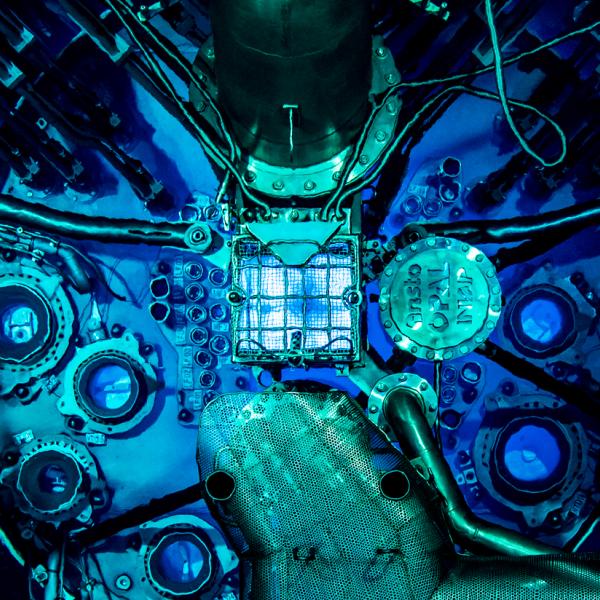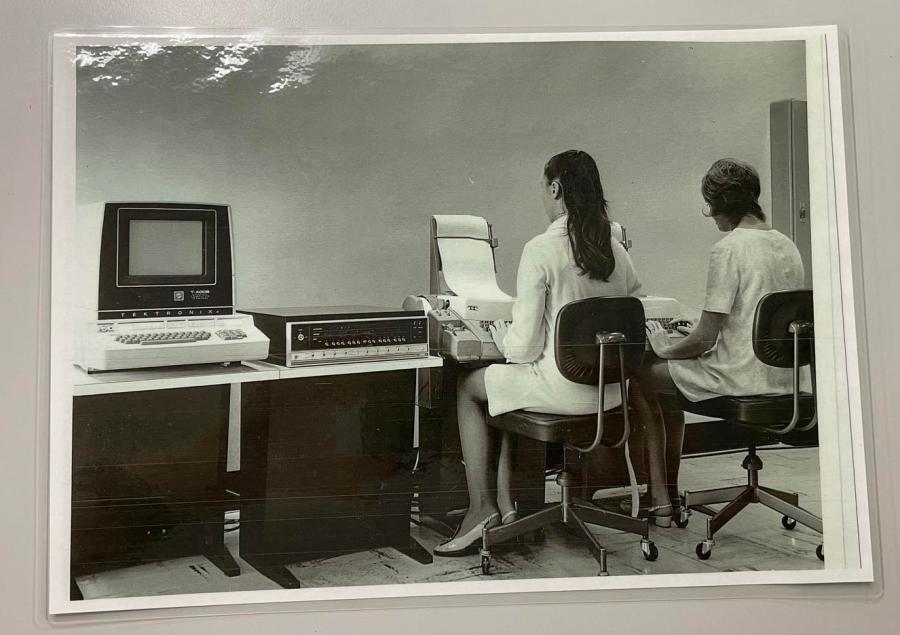
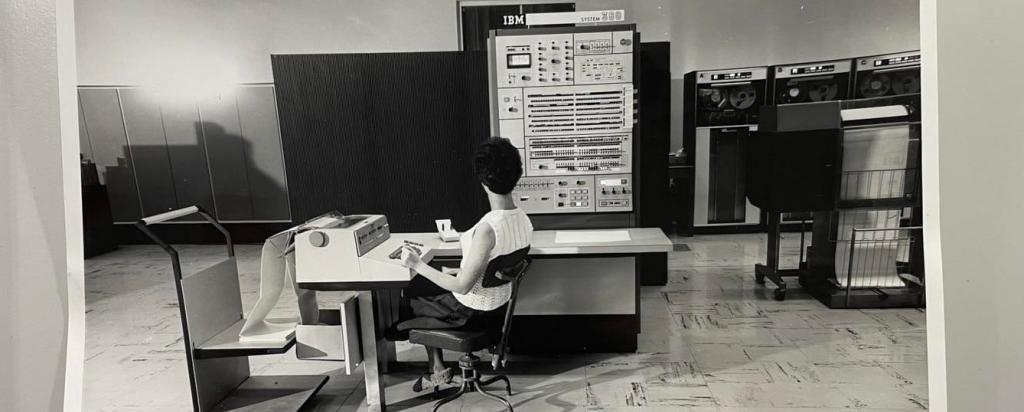
Published on the 7th March 2023 by ANSTO Staff
The celebration of the UN’s International Women’s Day 2023 has a theme that highlights the power of innovative IT to combat discrimination and the marginalisation of women globally.
There is a serendipitous link to the history of ANSTO, where it appears that some of the first females employed by ANSTO’s predecessor organisation Australian Atomic Energy Commission (AAEC) were women who operated, entered data into early computers or had roles as technical assistants.

A review of the AAEC Commission Annual reports from 1958-1986, contained some images of unidentified women at the controls of the big, unwieldy machines of the day.

According to a Deakin researcher, Australia moved into the computing era with the development of the CSIR Mk1 in the late 1940s, later renamed the CSIRAC. The new discipline of computing emerged with the introduction of course on programming and the application of computers at Australian Universities in 1956.
By the 1970s, when the Women’s Movement was in full swing, AAEC had its first women working with computational techniques for scientific applications.
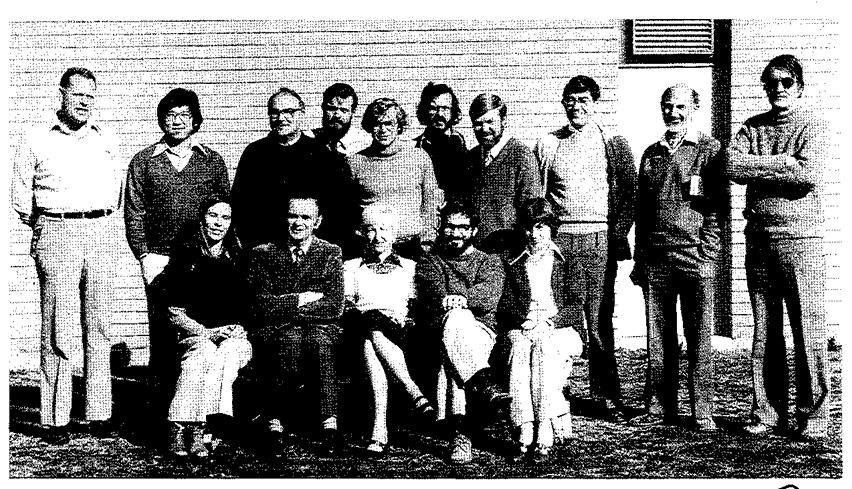
Edith Rose (centre), now retired, who had a Bachelor of Science, was a member of the Physics Division and involved in the solution of theoretical problems with computational technologies in the late 1970s. She worked at ANSTO from 1962 to 1991.
Although she was listed among the staff who supported a summer school on Simulation in the Sciences, she was not a presenter.
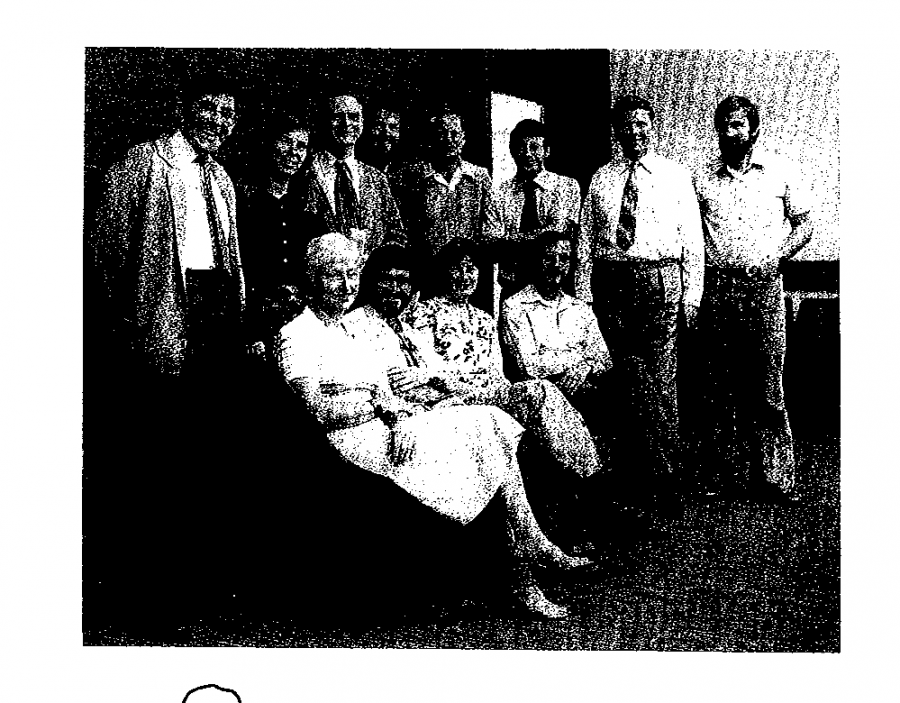
An old grainy photograph contains an image of her and her associate, Melanie Moore. Edith had a position in the Applied Math and Computing Division at the AAEC. At the time Ms Moore was located in Building 51, which is now occupied by IT.
Baiba Harrington was a member of the Nuclear Technology Division, who worked on computational solutions for reactor physics problems at the same time.
Ms Morton, who supervises a large team, is focused on digital transformation at ANSTO.
Currently 28 per cent of her group are women with ambitious targets driving progress.
But the story of the first female employees at ANSTO in the early days is not only women in computing.
A review of the Annual Reports published by the AAEC also contain images of women working with radioactive materials, perhaps relating to nuclear medicine production and also a small number of scientists.
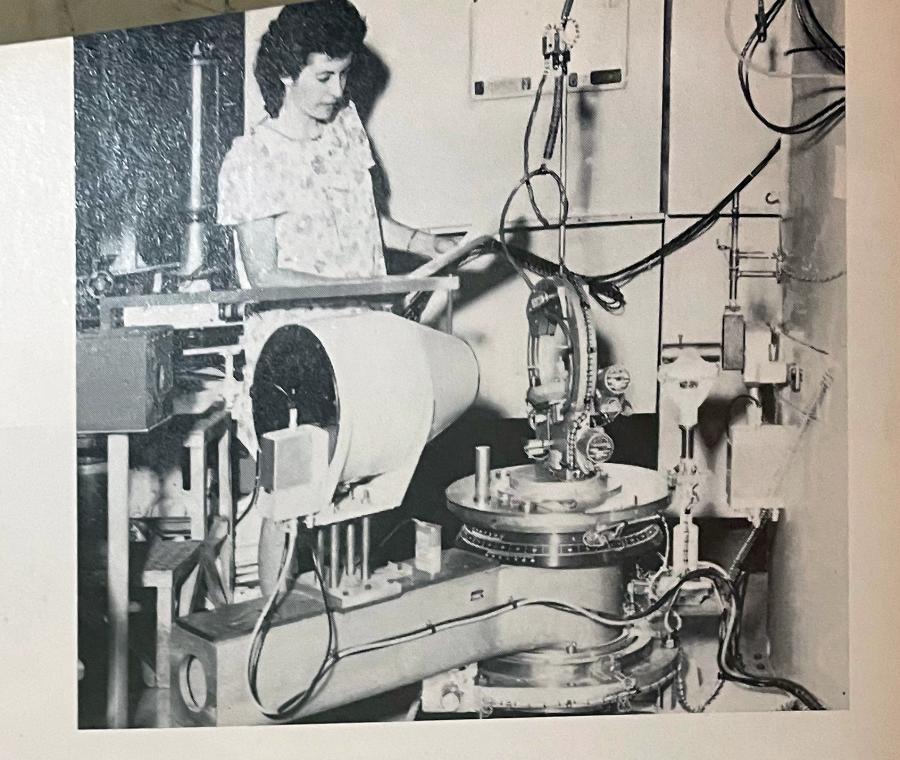
Dr Margaret Elcombe (above) joined the AAEC as a neutron beam scientist in 1967. She made a pivotal contribution to the development and operation of neutron scattering instrumentation and X-ray techniques on HIFAR and OPAL over a career which continues to this day. For close to 50 years, she used those techniques to answer scientific questions and solve challenges for industry.
Two other women, Judy Penny and Cherylie Thorn, now retired, who made a contribution providing administrative supporting for the work of the neutron scattering team (then the Bragg Institute) after moving over from the Physics Division.
Women also chose careers in environmental science. Ann Henderson Sellers, now Emeritus Professor at Macquarie University, was Director of the Environment Division from 1998 to 2005. She is a highly accomplished environmental scientist.
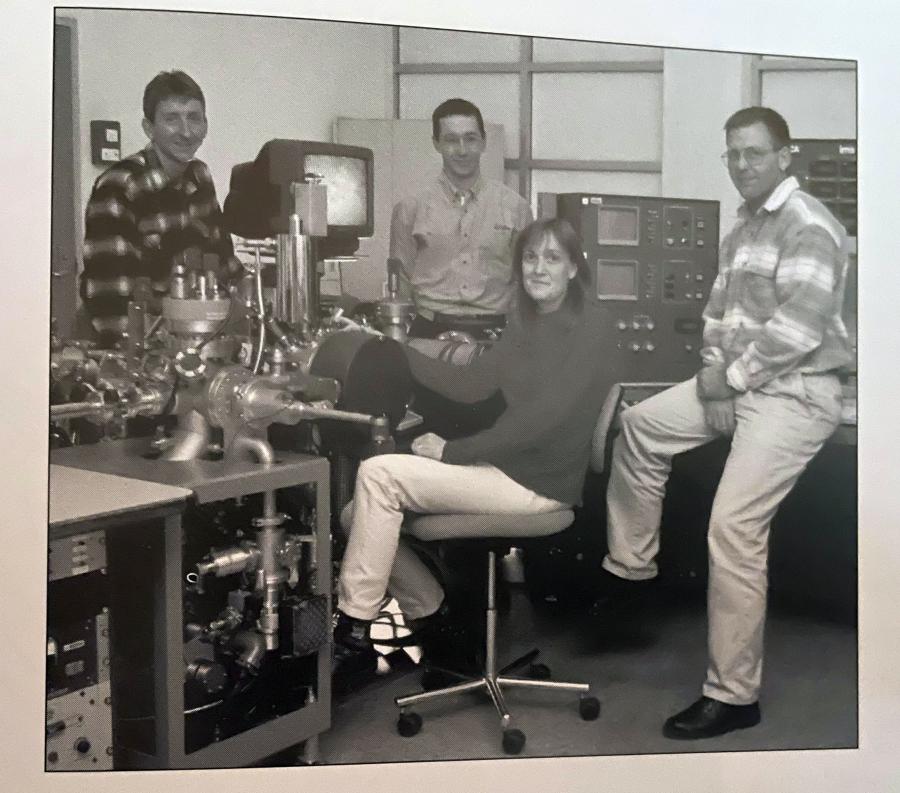
Dr Kathryn Prince (centre) headed a team who used secondary ion mass spectrometry for environmental applications in the early 2000s. Kathryn worked for Minerals for many years.
Dr Karin Soldenhoff has worked at ANSTO since 1990 in various technical roles and has held a senior managerial role in the Minerals business unit since its inception in 2004.
The first female accelerator operator at Lucas Heights was Olga Hawas who supported the work of the aerosol sampling program for fine pollution monitoring in a team with Prof David Cohen.
ANSTO was also very proud of its first nuclear reactor operator Jasmin Craufurd Hill, who is a researcher at UNSW, w Vice President of Advanced Technology, consultant and educator.
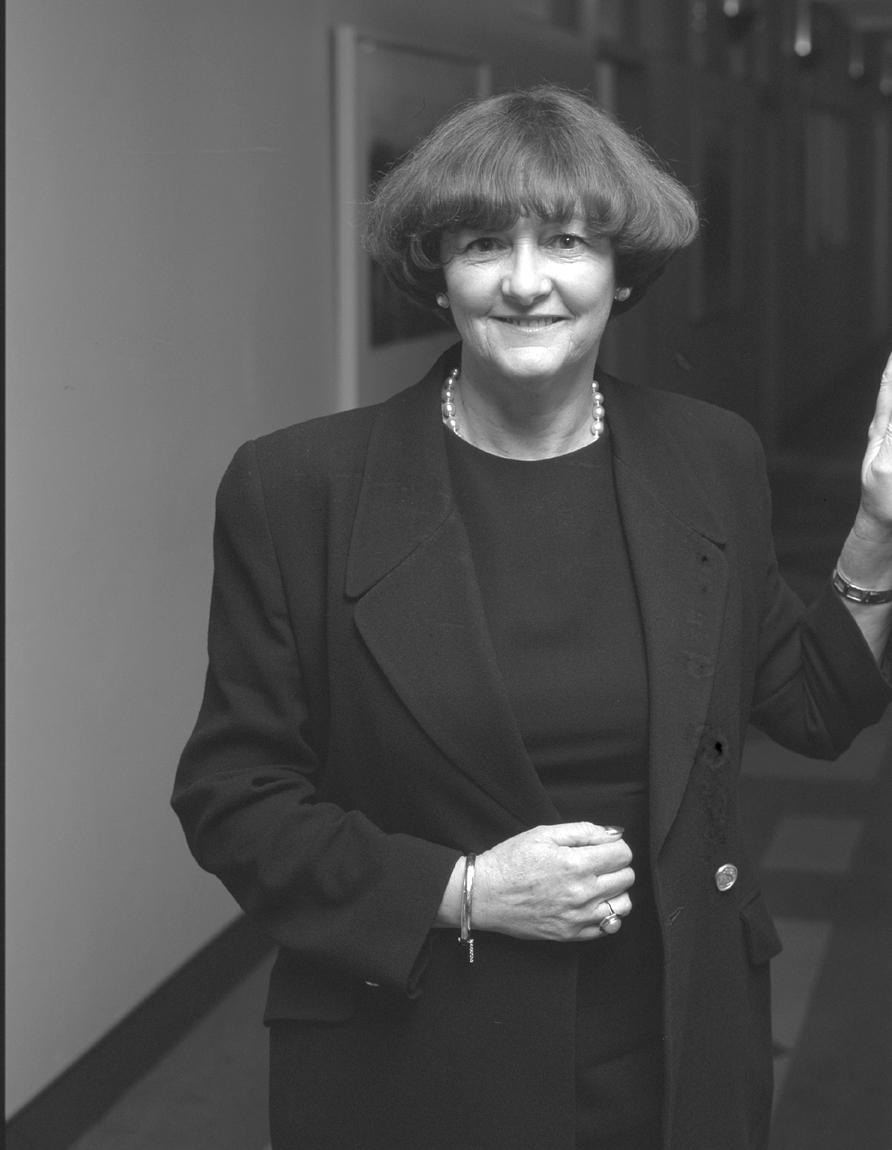
Perhaps the standout in the story of the organisation was the appointment of the Dr Helen Garnett (above)as the Executive Director in 1992. Dr Garnett was a scientist with a background in microbiology. She supervised the complex planning and construction of the OPAL multi-purpose reactor.
Today, the achievements of these pioneering women are a fitting legacy in ANSTO’s 70th anniversary year, their stories empowering young and mid-career professionals to make their mark today.
As we continue to make progress developing the women in our future workforce, it will be very exciting to see the accomplishments when we celebrate our centenary.
Thanks to Ned Blagojevic, Prof David Cohen, and Jenny Evans for their assistance.

